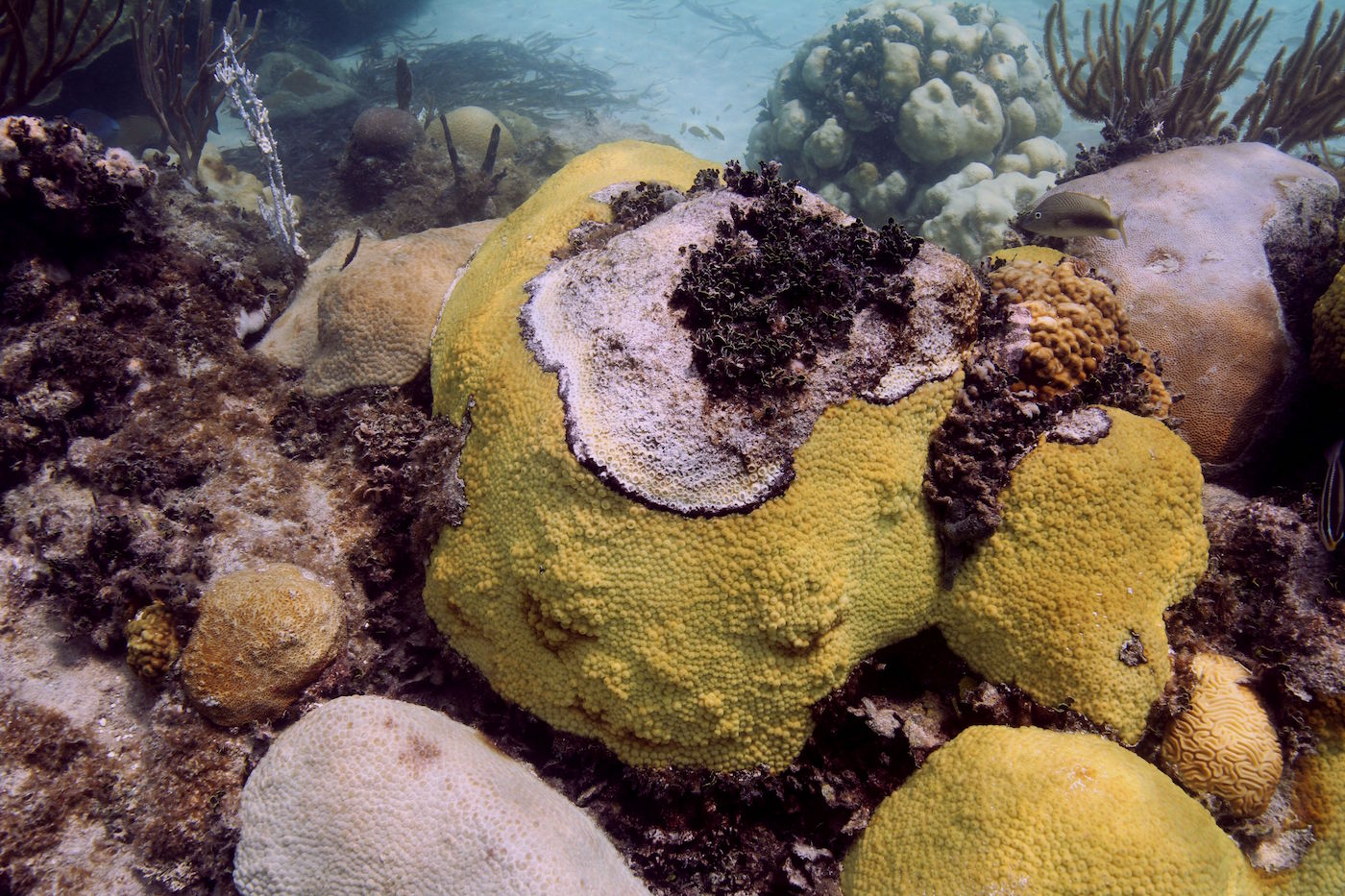On May 13th, the White House Office of Science and Technology Policy introduced the National Microbiome Initiative, an effort to support multi-agency research to help sample and better understand communities of microorganisms that are critical to both human health and the world’s ecosystems. As the nation’s premier ocean science agency, NOAA is leading interdisciplinary research to improve observation and assessment of marine microbiomes. To support this national initiative, NOAA’s Atlantic Oceanographic and Meteorological Laboratory (AOML) received nearly $2 million in funding this year to conduct a number of projects that integrate genetic sampling techniques and technologies to help advance the understanding of the ocean’s microbiomes.
Microbiomes are communities of diverse microscopic organisms that may include plants, animals, fungi, viruses, bacteria and other organisms that live on and inside people, plants, animals, soil, oceans, and the atmosphere. These microbiomes can influence human health, climate change, and food security, as well as many other aspects of our lives and environment. By sampling DNA, RNA, and proteins from single cells to whole organisms to entire communities, scientists hope to better understand where these organisms are, what they are doing, how they are affected by changing environmental conditions, and how they affect the environment in turn. The multi-disciplinary research conducted at AOML leverages existing resources and partnerships to enhance ecosystem observations and establish new approaches to assessing these communities.
Coral Microbiome Sampling to Understand and Combat Environmental Stressors
At research sites in Florida and the Caribbean, scientists will sample coral reefs, water, and marine sediments to identify variations that may explain why some corals are more susceptible or resilient to bleaching or coral diseases than others. With a focus on two species of rare and endangered corals, scientists are collecting and studying coral tissue to identify the genetic makeup and diversity of the microbiome, which consists of poorly understood communities of microorganisms living in close association with corals.

By using next-generation-sequencing of the DNA and RNA associated with these microbiome communities before, during, and after bleaching or coral disease events, researchers hope to identify the genetic traits of the most resilient corals and their microbial communities. Experiments will aim to identify communities that are associated with corals that are resistant to warming waters and disease in order to advise coral restoration efforts across the region.
Autonomous Technology to Support Ecosystem and Fisheries Assessments
Another collaborative project will test the potential of a state-of-the-art autonomous underwater vehicle (AUV) to conduct marine microbiome analysis. Successful development and transition of genomic analysis using AUV technology could reduce sample processing time, ship time needs and costs, and reliance on tissue sample collection. This work will test instrumentation from the Monterey Bay Research Institute in partnership with the J. Craig Venter Institute, NOAA’s National Marine Fisheries Service, and the Scripps Institution of Oceanography. In addition to assessing the microbiome to improve our understanding of food web dynamics, the project will also include field-testing of a new concept known as environmental DNA (eDNA). This technique detects the genetic signatures of macro-organisms such as invertebrates or fish by analyzing cells that have been shed into the water column. Understanding the connection between the marine microbiome and fisheries will improve our ability to monitor and predict ecosystem response to environmental change.

Sampling Ocean Genomics in the California current ecosystem
NOAA is also enhancing an existing ecosystem observation program by adding technology for genetic sampling as part of the California Cooperative Oceanic Fisheries Investigations (CalCOFI) program. The multi-agency program is one of the longest-running ocean observing programs and seeks to gain a more comprehensive understanding of the dynamics of the California Current ecosystem to foster stewardship, resilience, and sustainable resource management. By introducing these genetic sampling technologies, scientists hope to improve understanding of the diversity and functions of microbes in the ecosystem, enabling better prediction of ecosystem response to environmental pressures, including climate change. This project is a pilot for potential broader applications to other regions and across the NOAA research ship fleet.
Bioinformatics and Computing Capacity Enhancement
New projects at AOML will focus on increasing computing capacity and enhancing bioinformatic capabilities. Bioinformatics is the application of computer science to analyze and integrate biological and genetic information. This new field has developed in response to the massive amounts of sequencing data generated by the types of studies described above, all of which rely on bioinformatics. AOML’s bioinformatic capabilities will be used to improve our understanding and prediction of ecosystem response to changing environmental conditions.
Originally Published by Edward Pritchard, 2016
